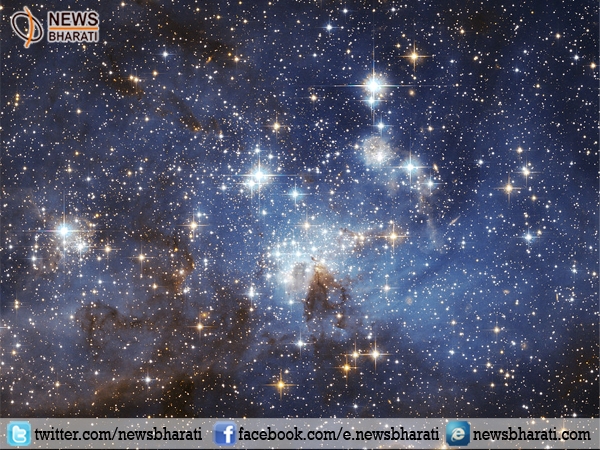Twinkly Massive Galaxy discovered: ‘Large Magellanic Cloud’ galaxy shines with million stars
New Delhi, January 5: Revealing shining stars in the neighbouring galaxy, astronomers discovered Large Magellanic Cloud galaxy. Astronomers have revealed an 'astonishing' overabundance of massive stars in a neighbouring galaxy. The results are published in the journal Science.

The discovery, made in the gigantic star-forming region 30 Doradus in the Large Magellanic Cloud galaxy, has 'far-reaching' consequences for our understanding of how stars transformed the pristine Universe into the one we live in today.
Lead author Fabian Schneider, a Hintze Research Fellow in the University of Oxford's Department of Physics, said: 'We were astonished when we realised that 30 Doradus has formed many more massive stars than expected.'
As part of the VLT-FLAMES Tarantula Survey (VFTS), the team used ESO's Very Large Telescope to observe nearly 1,000 massive stars in 30 Doradus, a gigantic stellar nursery also known as the Tarantula nebula. The team used detailed analyses of about 250 stars with masses between 15 and 200 times the mass of our Sun to determine the distribution of massive stars born in 30 Doradus -- the so-called initial mass function (IMF).
Co-author Hugues Sana from the University of Leuven in Belgium said: 'We have not only been surprised by the sheer number of massive stars, but also that their IMF is densely sampled up to 200 solar masses.' Until recently, the existence of stars up to 200 solar masses was highly disputed, and the study shows that a maximum birth mass of stars of 200-300 solar masses appears likely.
The team turned to 30 Doradus, the biggest local star-forming region, which hosts some of the most massive stars ever found, and determined the masses of massive stars with unique observational, theoretical and statistical tools. This large sample allowed the scientists to derive the most accurate high-mass segment of the IMF to date, and to show that massive stars are much more abundant than previously thought. Chris Evans from the Science and Technology Facilities Council's UK Astronomy Technology Centre, the principal investigator of VFTS and a co-author of the study, said: 'In fact, our results suggest that most of the stellar mass is actually no longer in low-mass stars, but a significant fraction is in high-mass stars.'
Fabian Schneider added: 'Our results have far-reaching consequences for the understanding of our cosmos: there might be 70% more supernovae, a tripling of the chemical yields and towards four times the ionising radiation from massive star populations. Also, the formation rate of black holes might be increased by 180%, directly translating into a corresponding increase of binary black hole mergers that have recently been detected via their gravitational wave signals.'
The team's research leaves many open questions, which they intend to investigate in the future: how universal are the findings, and what are the consequences of this for the evolution of our cosmos and the occurrence of supernovae and gravitational wave events?